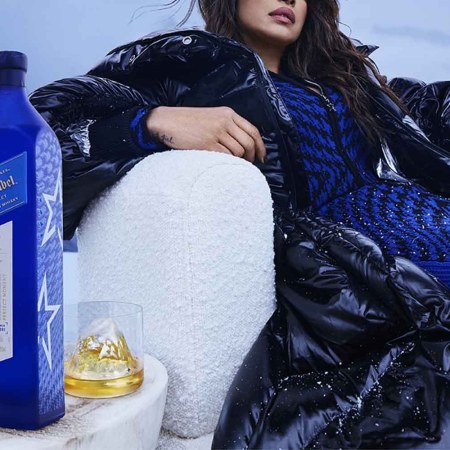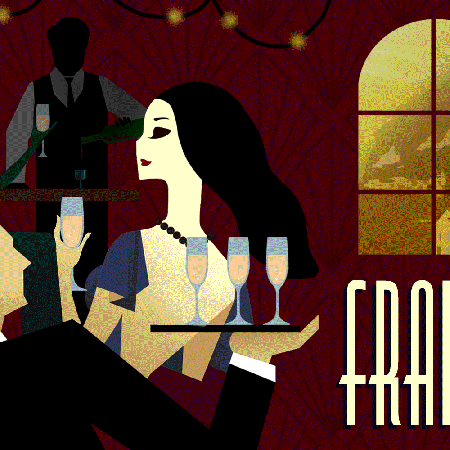
To celebrate the incredible drinking cultures of Europe, we dove deep into 10 different countries to get to know a little more about what’s in their glasses and how it got there in the first place. Click here to see them all.
If you look up “drinking culture in Scotland” online, you’re going to be depressed. But you’ll also be seeing an outdated stereotype. Scotland earned its heavy drinking reputation in the late 20th century, as retail and drinking laws relaxed and alcohol became much cheaper. Average alcohol consumption surged 25% between the late 1980s and early 2000s — but just as importantly, those numbers have steadily declined in the following decades.
“We’ve been subject to stereotypes about heavy drinking, partly stemming from industrial-era struggles, when alcohol was often a form of escape for workers facing difficult conditions,” says Angelos Kyrousis, the Food and Beverage Director at Virgin Hotels Edinburgh. “The media often highlights the more negative aspects of our drinking culture. Today, many Scots enjoy alcohol responsibly, and there’s an increasing emphasis on alternative ways to socialize that don’t involve excessive drinking. Craft beers, low-alcohol options and non-alcoholic beverages are becoming more popular in Scottish bars and restaurants, and we’re seeing that demand increase in our own outlets.”
You may associate Scotland with whisky, but drinking here is hardly just about Scotch — my favorite bar in Edinburgh is a funky and affordable speakeasy that caters to all spirits, including rum; Scotland has a long history with the spirit that predates whisky, and it’s home to more than a few local rum distilleries.
For some people in the drinks business, the Scottish reputation is just fine. “We have the reputation of being friendly!” says Simon Brooking, the national ambassador for Laphroaig. “That’s why the English come up for weekends to have fun.”
So what is drinking in Scotland really like? We break it down for you right here.

We obviously can’t talk about Scotland without mentioning whisky. “It’s undoubtedly Scotland’s most iconic beverage,” Kyrousis says. “It’s a globally renowned symbol of Scotland’s proud heritage and spirit.” There are five whisky regions in the country: Campbeltown, Highland, Islay, Lowland and Speyside, all offering different styles. And it’s important to note that, outside of Islay, the majority of Scotch is not peaty but rather fruity and floral.

It’s not alcoholic, but Irn-Bru (“Scotland’s other national drink” and shorthand for “Iron Brew”) is a fizzy soft drink that outsells Coca-Cola and is great for hangovers. According to Brooking, Scottish men used to go to pubs and drink a pint of beer and a chaser of whisky. “It was called ‘half and a half,’” he says. Nowadays, for that combo, he recommends the local Tennent’s lager paired with Famous Grouse.
Plus, the Homemade Thing
Scotland doesn’t really have a poitín or moonshine, but whisky did start as a homemade booze. “It was known as ‘uisge beatha,’ which means ‘water of life,’” says Annabel Thomas, founder and CEO of Scotch whisky distillery Nc’nean. “It would have been produced in many of the remote settlements in Scotland and been a much rougher version of the drink we know today, as a result of poorer distillation techniques and limited maturation. They also flavored it with local herbs and plants to try to make it more delicious. But that was all in the days before the government regulated alcohol production.”

On January 25th, people celebrate the poet Robert Burns and enjoy haggis, Scotch, poetry and music. If his most famous poems (“Scots Wha Hae,” “A Red, Red Rose,” “Tam o’ Shanter”) don’t ring a bell, one song might. “You know that song you hear at New Year’s, ‘Auld Lang Syne’? The most sung song in the English language? Robert Burns wrote it,” says Andrew Weir, a long-time Burns Night performer, drinks professional and Braveheart actor, who now hosts Burns Distilled every year in New York. “Every year on the 25th of January, we celebrate this guy’s work in a way that we don’t with Shakespeare or Wordsworth or Tennessee Williams or Oscar Wilde. This doesn’t exist for other figures of literature.”
Hogmanay
Hogmanay is Scotland’s New Year’s Eve celebration, full of street parties, fireworks and many, many drams. “It famously requires two public holidays to recover from,” Thomas says. “There’s a big street party in Edinburgh and smaller celebrations around the country.”
Islay Feis Ile (Islay Festival of Music & Malt)
As Brooking explains, it’s “seven days at the end of May when the western Hebridean island of 3,200 people swells to more than 10,000 whisky fans for a week celebrating the best of Scotland’s national drink, accompanied by the top traditional and contemporary bands in the current music scene.”



Nothing out of the ordinary here: pork scratchings, mixed nuts and crisps dominate. On the latter, Brooking says salt and vinegar is king, followed by cheese and onion.

When you’re in Glasgow, The Horseshoe Bar is known for having the longest continuous bar in Europe. Located on Byres Road, Tennent’s Bar is a 140-year-old pub that’s also a good place to watch sports. The Scotia is the city’s oldest pub and features live music (plus, it’s dog-friendly). Lismore, Park Bar and Ben Nevis are three renowned whisky bars on the west end, while The Pot Still features more than 1,000 whiskies. And for cocktail fans, hit up Panda & Sons, a wonderfully inventive speakeasy.

In Edinburgh, The Sheep Heid Inn “was rumored to be a favorite with Queen Elizabeth II when she visited the Capital,” Kyrousis says. If you’re looking for something outside of traditional pub or whisky culture, Ruma is a brand-new bar with the largest selection of rum in the city.
Bertie’s is located inside the Fife Arms in Braemer, a tiny village about three hours and one narrow, winding road away from Edinburgh. There you’ll find a whisky haven where they organize the spirits by food, song or flavor profile, not region. “I always felt like whisky regions meant nothing,” says Bertie’s Angus Upton. “That’s something the industry developed. I think it limits us on who we can speak to and what we appeal to. It doesn’t matter where the distillery is. It’s the quality of the spirit.”
Finally, if you’re up for a trip, The Old Forge is located on Knoydart, and it’s thought to be the UK’s most remote pub. You can get there via an 18-mile hike or (much faster) seven-mile sea journey.

- Take your whisky neat. It’s not an “on the rocks” culture.
- When you toast, say “Slànte Mhath!” That means good health (and it’s pronounced “slanj-uh va”).
- Don’t brag and don’t be serious. “Our humor will soon sort you out,” Brooking says. “We’re not a serious nation. You only have to look at our bloody awful football team’s track record to know we can’t be too serious about life.”
- Bring your dancing shoes. “You never know when there might be a small ceilidh in the bar of an evening,” Thomas says. “‘Strip the willow’ is my favorite of all the Scottish dances.”

Penicillin
The Penicillin was created by an Australian (Sam Ross) at a famous New York City speakeasy (Milk & Honey). That said, it’s a cocktail that beautifully showcases Scotland’s most famous export, and the final result is tart, smoky and sweet.
2 oz. blended Scotch
.75 oz. freshly-squeezed lemon juice
.75 oz. honey-ginger syrup
Dash of smoky single malt Scotch
Candied ginger, for garnish
Add the blended Scotch, lemon juice and syrup into a shaker tin with ice. Shake until ice cold and strain into a rocks glass over fresh ice. Top with a dash of smoky single malt Scotch (something from Islay or something like Compass Box Peat Monster) and garnish with candied ginger.

Rusty Nail
As our writer Jacob Grier notes, Drambuie’s roots go back to at least the 1800s on the Isle of Skye, where it began as a blend of Scotch, spices, herbs and honey. Today it’s synonymous with the Rusty Nail, a cocktail that gets a ton of mileage out of just two ingredients. Adjust the measurements as desired, and garnish with a lemon twist if you want to brighten it up.
1.5 oz. Scotch
75 oz. Drambuie
Lemon twist, for garnish (optional)
Fill a rocks glass with ice, add the Scotch and Drambuie, and stir. Garnish with a lemon twist.
Join America's Fastest Growing Spirits Newsletter THE SPILL. Unlock all the reviews, recipes and revelry — and get 15% off award-winning La Tierra de Acre Mezcal.



